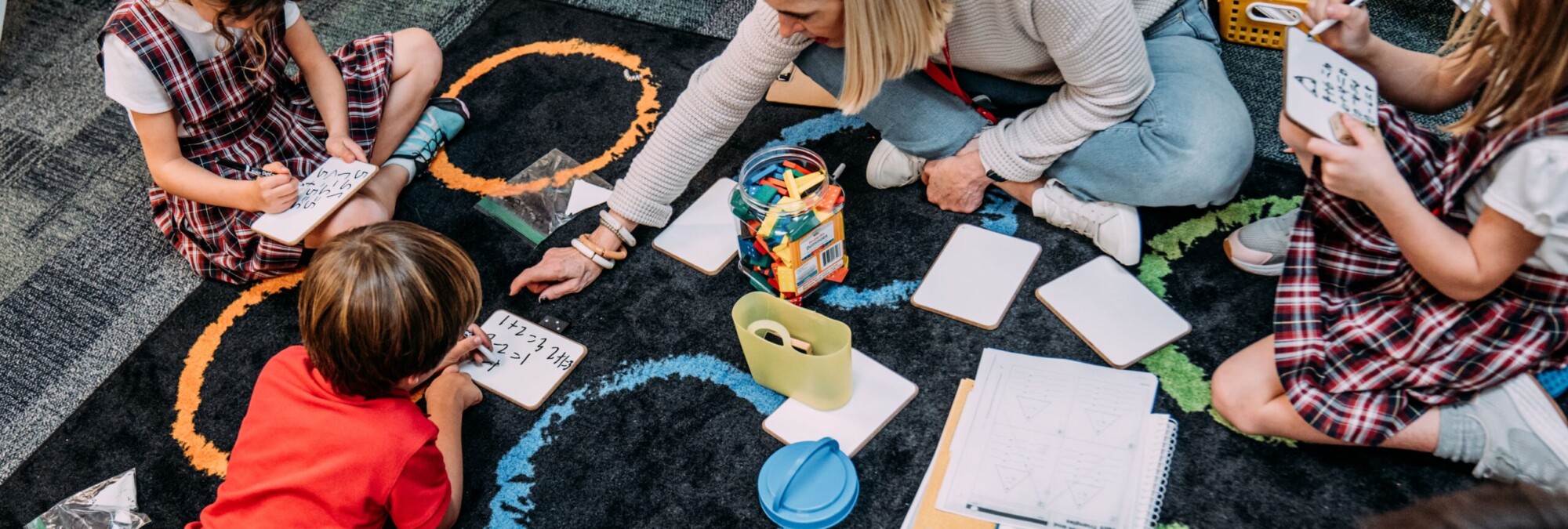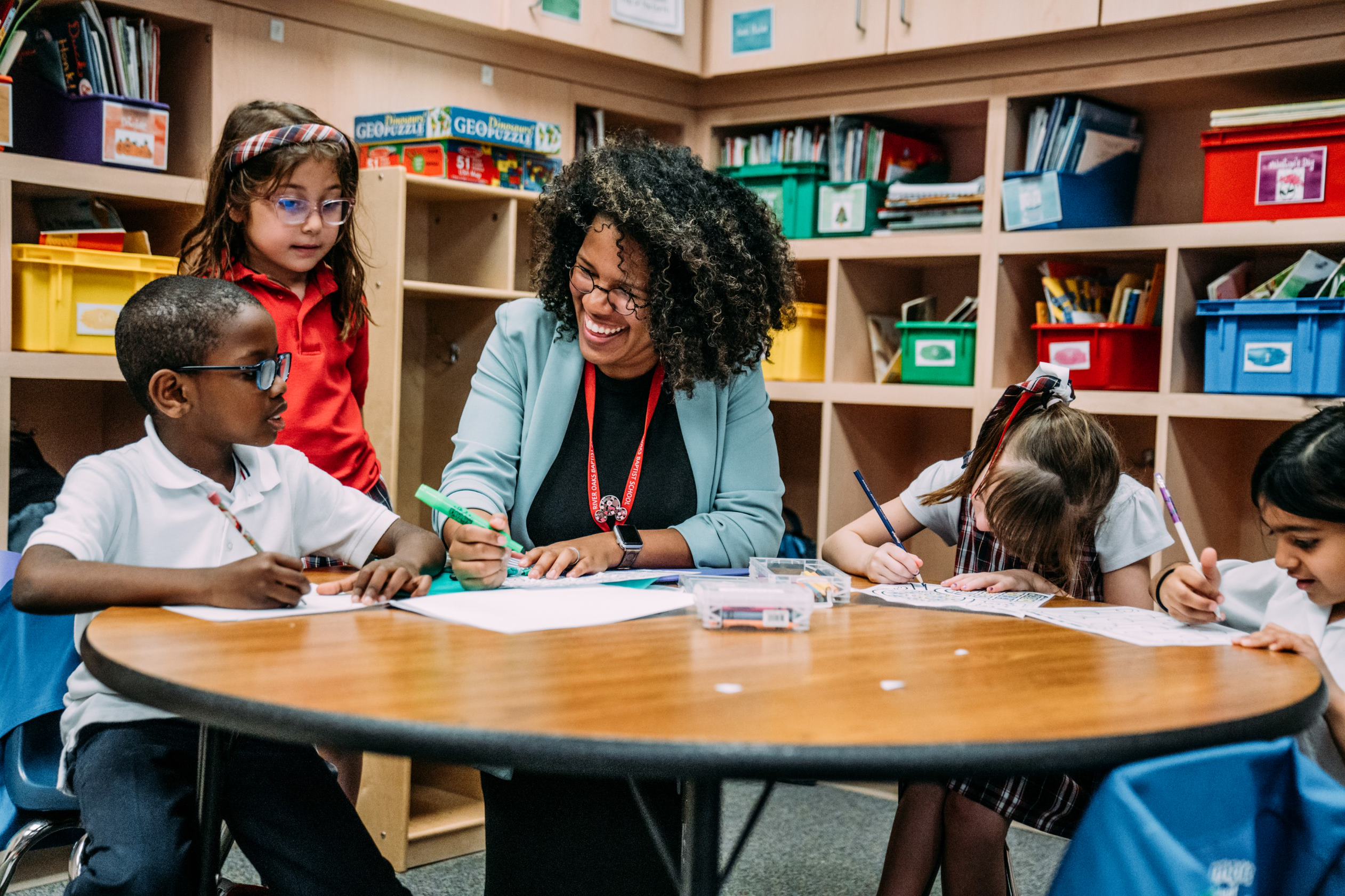
Is my child bored in class? Is she anxious about assignments?
Does his teacher really understand him?
Is she really being challenged?
Our mission at ROBS is to educate the whole child, recognizing that each is uniquely created by God with special qualities and gifts for development. What challenges and excites one may overwhelm or frustrate another. What one finds interesting another finds boring. Finding that “sweet spot” for each student–work that challenges but doesn’t deter, work that reinforces but isn’t dull–allows us to reach each varied and unique learner in our community in a way that is both meaningful and purposeful.
How do we see this in action? You might walk into a PreK classroom and see children engaged in one of our most popular activities–book making. At the Preschool level, we know children move along the development continuum at varying rates and in different ways across skill domains. Teachers are trained to individualize instruction based on careful observations of early academic skills, fine and gross motor development, and grasp of speech and language, as well as the development of social skills. Because each child’s fine motor and early literacy skills are at a different stage, our teachers group students who are working on similar tasks. You see one group working with their teacher, focused on carefully adding details to their illustrations that show where or when the story took place. As the teacher scaffolds their drawing, she helps them develop the three-finger grip they will need for writing, building their fine motor skills. A second group is ready to add words to their books. The teacher helps those children slowly say a simple word, coaching them to listen for the beginning sound, identify the sound, match that sound to its corresponding letter, and then add that letter to their illustration. These children are developing their phonological awareness and phonics skills. A third group of students who have already internalized letters and sounds is ready to write a complete sentence on each page. The teacher shows them how to end sentences with punctuation and helps them stretch out long words to hear each sound. This group is working on grammar and spelling. Every student is growing in the way that’s best for them.
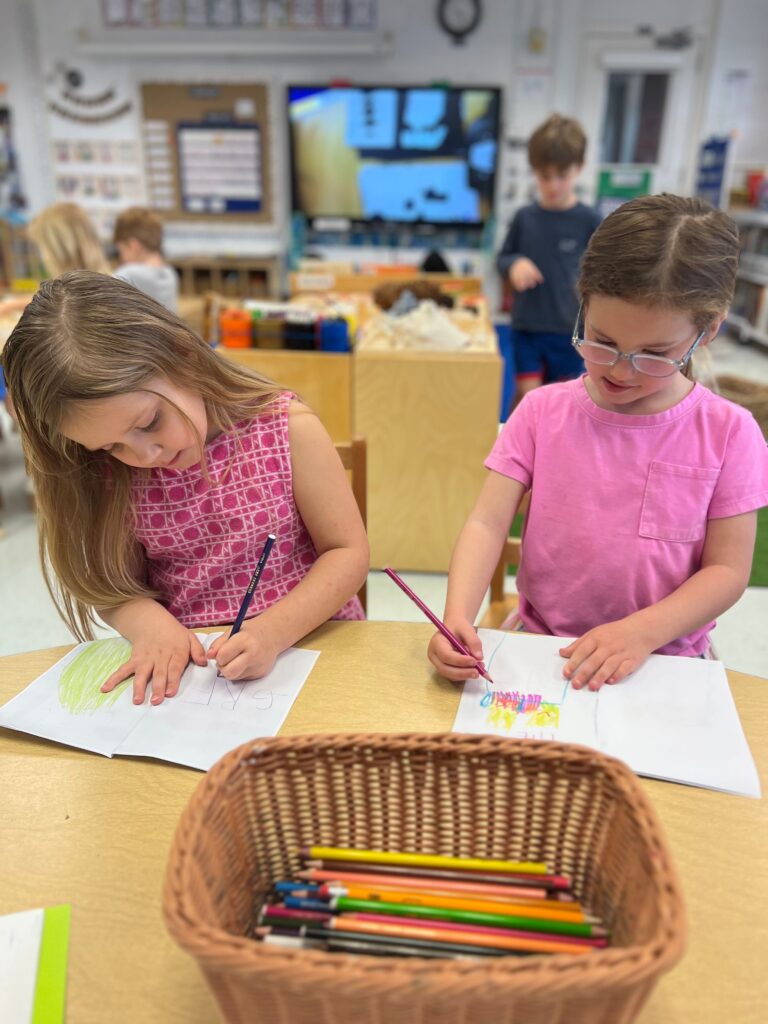
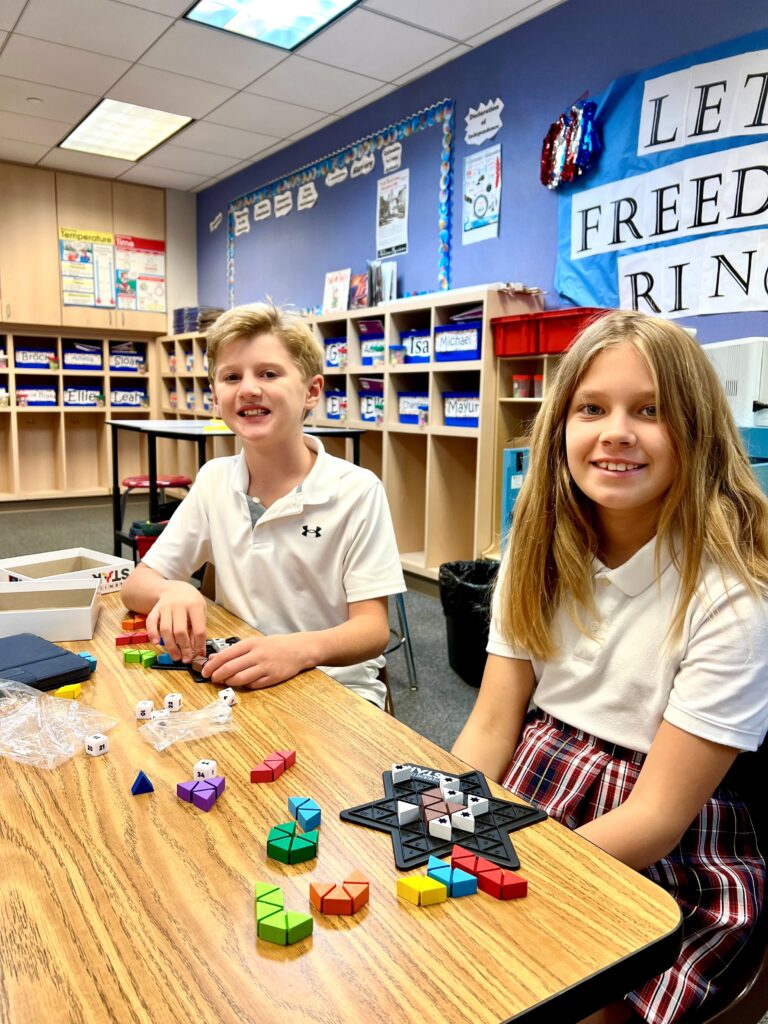
How do we see this in action? You might walk into a fourth grade classroom where students are learning about fractions. As students move into Lower School, pre-assessment and grouping inform instruction. In third and fourth grades, students are assessed on prior knowledge before each new mathematics unit. Based on the results, teachers plan flexible, purposeful groupings to meet their students’ instructional needs. In this room you see a group of students–maybe on the floor with individual whiteboards–who have mastered computational skills and are extending their knowledge by working collaboratively on complex word problems. In a circle at the back of the room you see another group of students–they’re working on their computational fluency through repeated exposure to the content. At the horseshoe table working with their teacher is a third group–these students are working through problems using manipulatives like fraction circles or cubes. Each student in the classroom is working through the material in the most appropriate way for him, surrounded by a group of supportive peers and encouraged by his individual successes
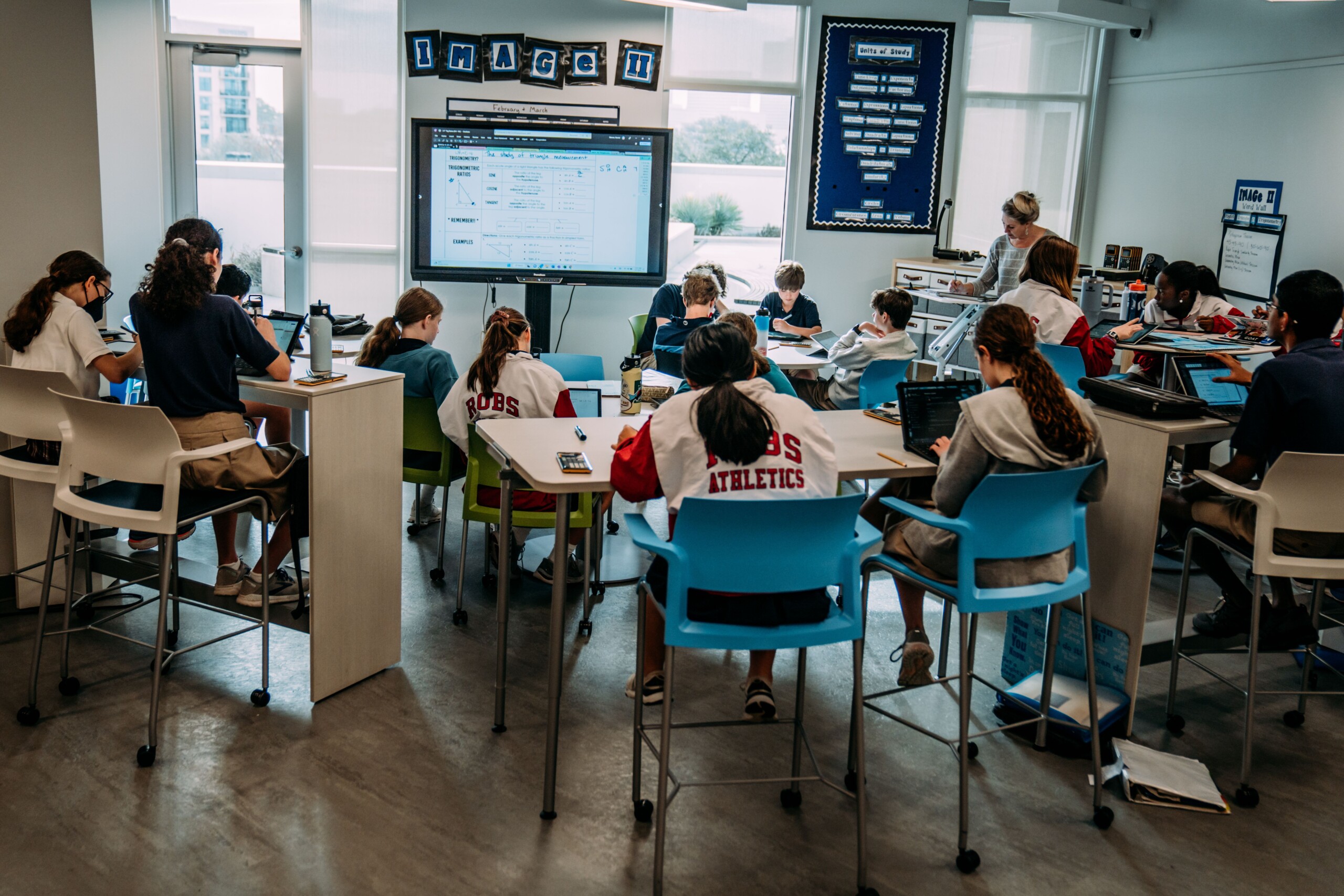
Did you know?
Middle School core curriculum begins differentiating in sixth grade! Sixth graders are placed in either Math or the faster-paced Pre-Algebra. They are also placed in the appropriate-level Spanish course or Academic Seminar. Differentiated course offerings in seventh and eighth grade include three levels of math, an Honors English option, and an Honors Spanish option.
In Middle School, this philosophy is built into the program offerings. During the key middle school years, adolescents are discovering what excites them, honing their passions, and understanding more about their own learning preferences. With this in mind, we try to give our students, seventh and eighth graders in particular, more ownership over their learning. The elective preference and course placement processes ensure students are enrolled in the classes that best suit their interests and talents.
How do we see this in action? After an introduction to both choir and orchestra in fifth and sixth grades, a seventh grader might decide not to pursue performing arts–she enrolls in painting, Makerspace, maybe a leadership course instead. Another student might discover a passion for the cello that he would not have found otherwise–he enrolls in yearlong orchestra along with a leadership course robotics, among others. Yet another student discovers a love of singing–she enrolls in yearlong choir and Chapel Worship Team. The many elective choices in Middle School, along with our honors English, Spanish, and math offerings, ensure our students are enrolled in courses that best fit their interests and abilities.
This article was featured in the Summer 2023 issue of River Oaks Baptist School’s Vine & Branch magazine. The article illustrates the mission of River Oaks Baptist School and teachers use differentiated instructions to educate the whole child.
